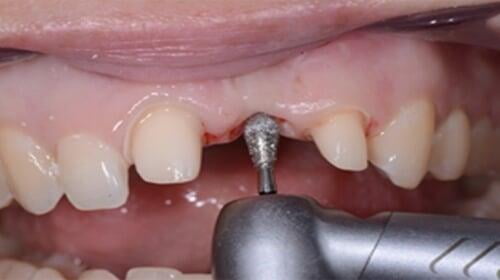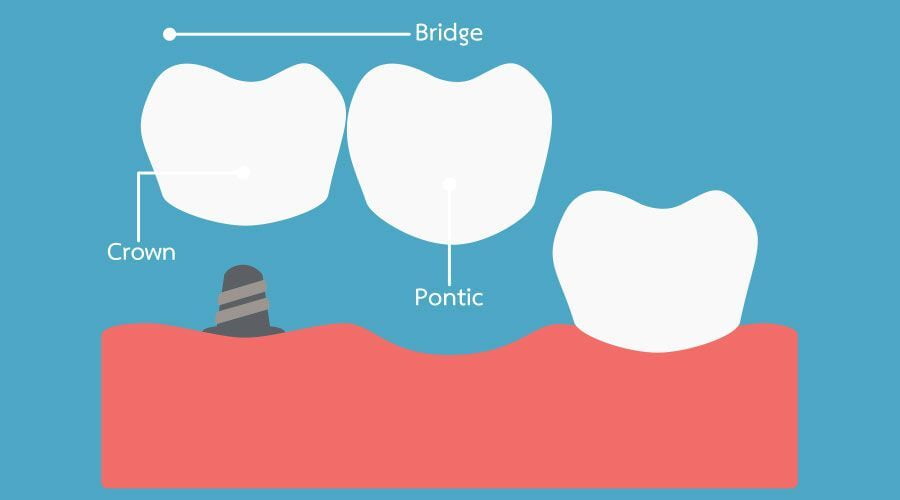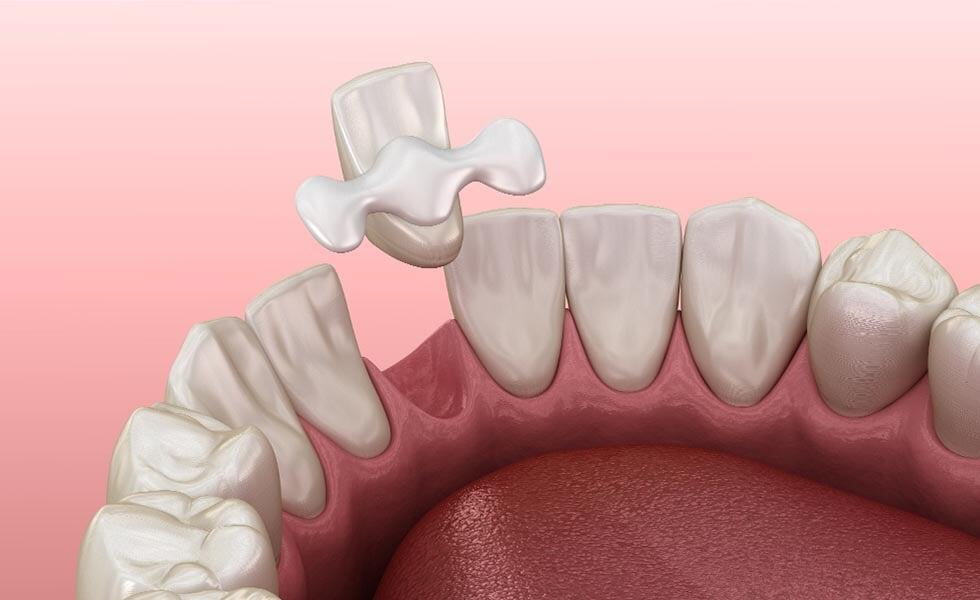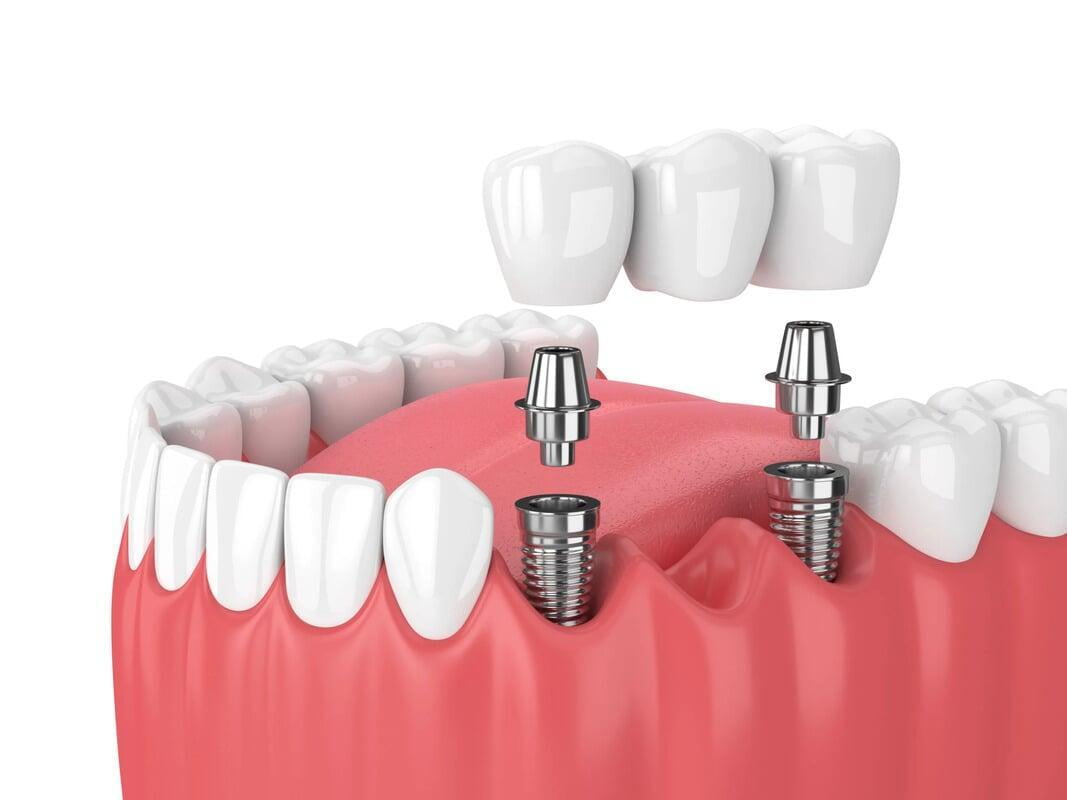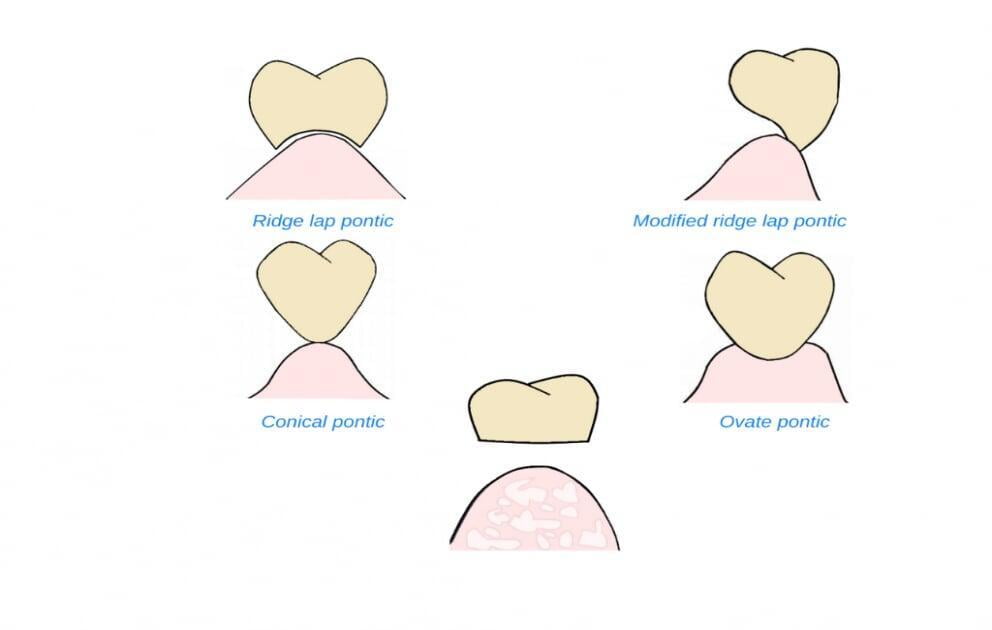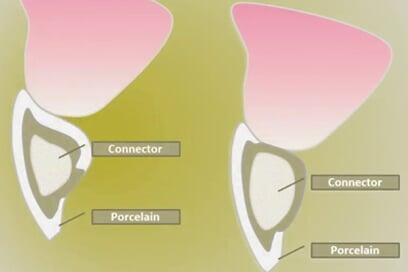Restorative dentistry offers various solutions for replacing missing teeth, and one crucial element in this field is the use of pontics. A pontic is an artificial tooth used to fill the gap created by a missing tooth or teeth. Different types of pontics are designed to suit specific clinical situations, and understanding these variations, along with their indications and contraindications, is essential for achieving successful dental restorations.
Full Pontic
Full Pontic
A full pontic is a conventional artificial tooth that replaces the entire missing tooth. It's an excellent choice when the adjacent teeth are healthy and do not require crowns or extensive dental work. Let's delve into the indications and contraindications for full pontics:
Indications :
- Suitable when the adjacent teeth are structurally sound and healthy.
- Effective for replacing single missing teeth.
- Offers a robust and stable solution.
Contaraindications :
- Not recommended when the adjacent teeth have extensive decay, damage, or inadequate support.
- Inadequate support from adjacent teeth may lead to instability over time.
Cantilever Pontic
Cantilever Pontic
A cantilever pontic is a modification of the full pontic, primarily designed for cases where only one adjacent tooth is available for support. This type of pontic is bonded to one adjacent tooth, creating a cantilevered structure. Here are the indications and contraindications:
Indications :
- Suitable when only one adjacent tooth is available for support.
- Useful for replacing single missing teeth at the end of a dental arch.
- Provides an esthetically pleasing solution.
Contaraindications :
- Not recommended if the adjacent tooth is weak, compromised, or unable to withstand the additional load.
- May exert excessive force on the supporting tooth over time, potentially leading to damage.
Choosing the Right Pontic
Choosing the Right Pontic
A Guide To Types, Indications and Contraindications
A Guide To Types, Indications and Contraindications
A Maryland bridge, also known as a resin-bonded bridge, employs metal or porcelain wings bonded to the adjacent teeth to support the pontic. This type of bridge is minimally invasive and offers several advantages:
Indications :
- Appropriate for replacing missing front teeth.
- Suitable when the adjacent teeth are healthy and strong.
- Ideal for cases where a more conservative approach is desired.
- Provides excellent esthetics.
Contaraindications :
- Not recommended for replacing molars or teeth subject to heavy chewing forces.
- May not provide adequate support if the adjacent teeth have inadequate structure.
An implant-supported pontic is a standalone artificial tooth supported by a dental implant surgically placed in the jawbone. This type of pontic offers superior stability and function. Here are the indications and contraindications:
Indications :
- Ideal for replacing single or multiple missing teeth.
- Suitable when the patient has sufficient bone density and overall oral health.
- Provides excellent esthetics and function.
- Long-term durability.
Contaraindications :
- Not recommended for patients with inadequate bone density or other medical conditions that affect healing.
- Requires oral surgery, which may not be suitable for all patients.
- Higher cost compared to other pontic options.
A ridge lap pontic is designed to partially cover the edentulous ridge beneath it. This type of pontic is used when the ridge contour needs modification or when there is inadequate bone support. The indications and contraindications are as follows:
Indications :
- Suitable for cases where the alveolar ridge shape requires adjustment.
- Effective in cases of minor ridge defects or bone resorption.
- Provides added support for the pontic.
Contaraindications :
- Not recommended for cases of severe ridge defects or extensive bone loss.
- May not provide adequate support for heavy chewing forces.
- Requires careful design and consideration to prevent tissue irritation.
A saddle pontic is a pontic that does not touch the edentulous ridge underneath. Instead, it relies on tissue support for stability. This type of pontic is indicated and contraindicated as follows:
Indications :
- Suitable for cases with minimal ridge support or severe bone resorption.
- Effective when esthetics and function can be maintained without ridge contact.
- Reduces pressure on the underlying tissues.
Contaraindications :
- Not recommended for cases where ridge support is essential for stability.
- May not provide adequate chewing function in certain situations.
- Requires precise adaptation to the tissue for stability and comfort.
Empowering Patients Through Informed Pontic Selection at Malligai Dental
Empowering Patients Through Informed Pontic Selection at Malligai Dental
In Malligai Dental's perspective, making the right choice regarding the type of pontic for a dental restoration is a pivotal decision that significantly impacts the success of the treatment in the long run. Our dedicated team of dentists conducts a thorough assessment of each patient's unique clinical situation, taking into careful consideration the condition of neighboring teeth, the level of bone support available, and individual patient-specific factors. This meticulous evaluation guides us in selecting the most appropriate pontic design.
Understanding the indications and contraindications associated with each pontic type empowers our dental professionals to offer patients the finest options for their restorative needs, ensuring not only a beautiful smile but also optimal functionality in tooth replacement. We place great importance on achieving a harmonious balance between esthetics and functionality.
It's imperative to bear in mind that every patient's case is singular and requires a comprehensive evaluation conducted by our qualified dentists and prosthodontists. This process is vital in determining the pontic type that best suits each individual's unique circumstances. Furthermore, we believe in actively involving our patients in the decision-making process, educating them about the available options, and enabling them to make well-informed choices for their dental health and overall well-being.
In summary, at Malligai Dental, the selection of the appropriate pontic type is always guided by our commitment to enhancing the patient's overall oral health, accommodating their esthetic preferences, and ensuring long-term comfort and functionality. As the field of restorative dentistry continually advances, we remain dedicated to offering a diverse range of options to cater to the distinct needs of our patients, ensuring enduring dental health and satisfaction.


